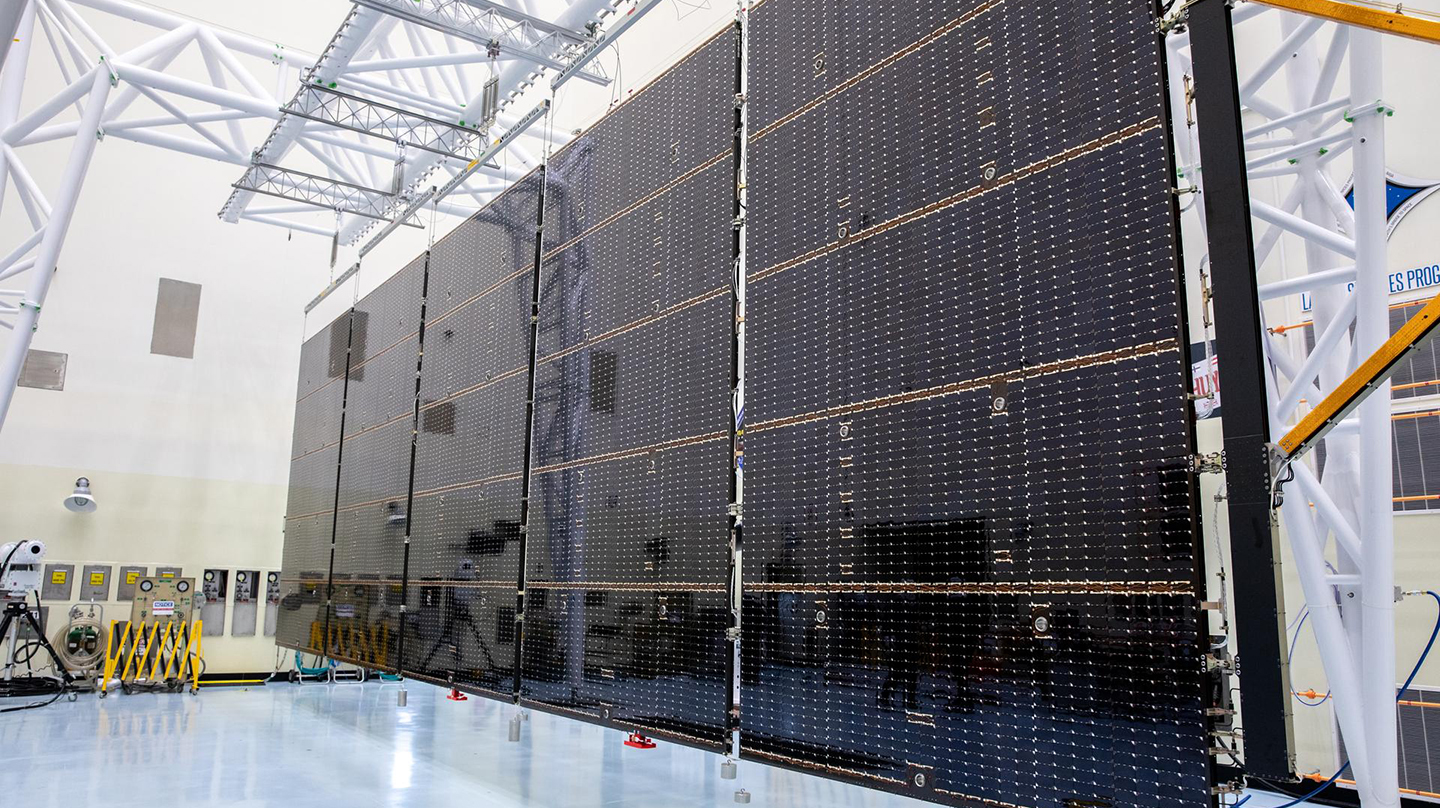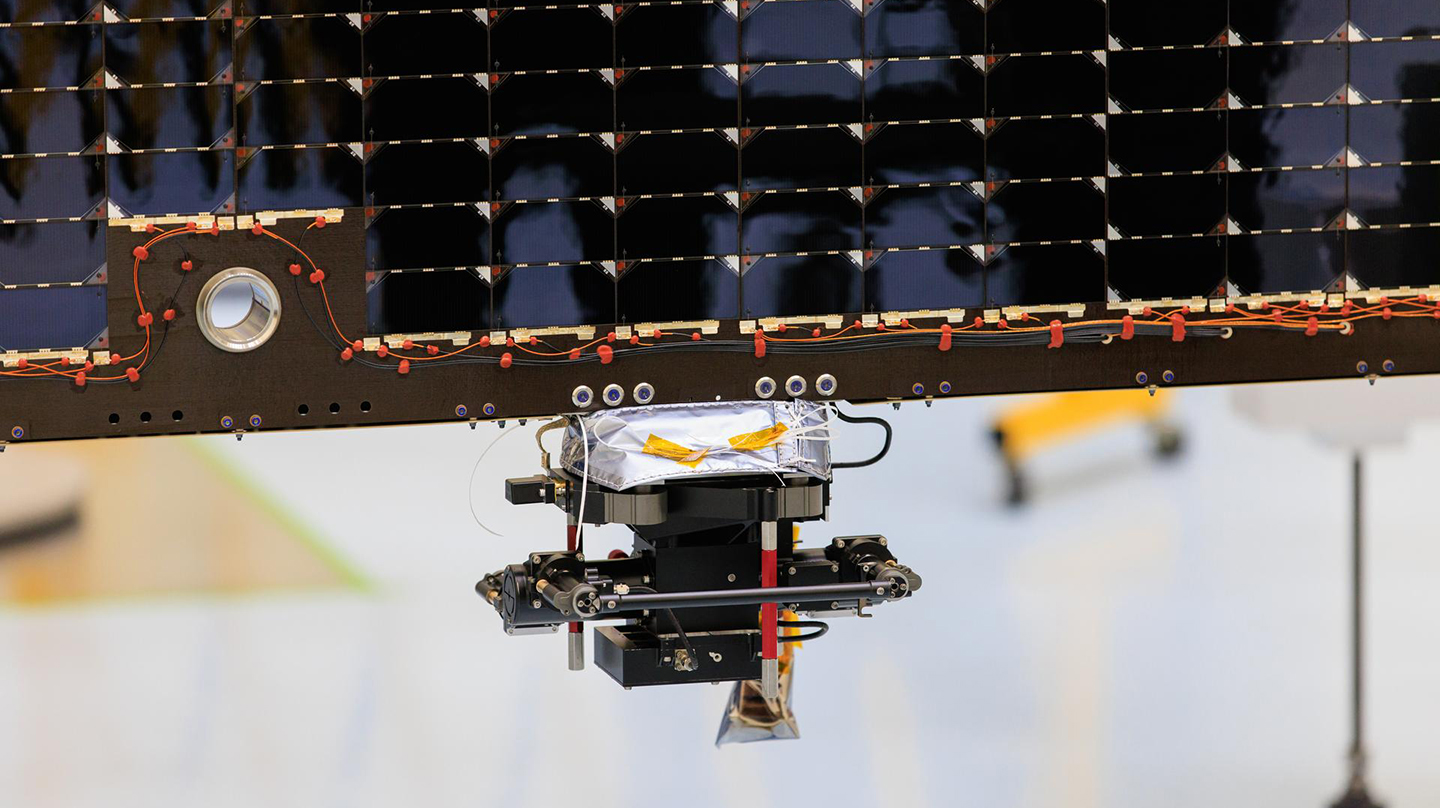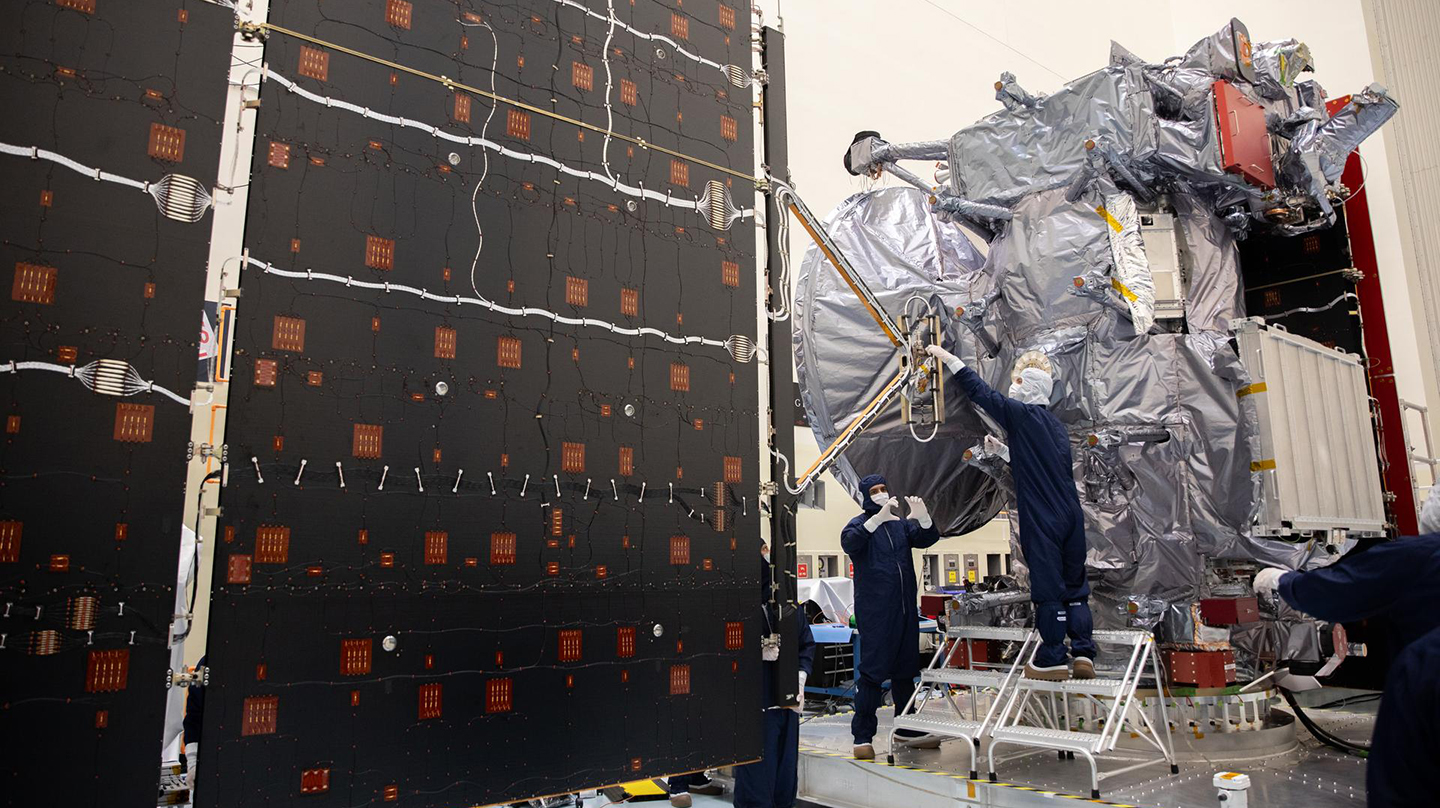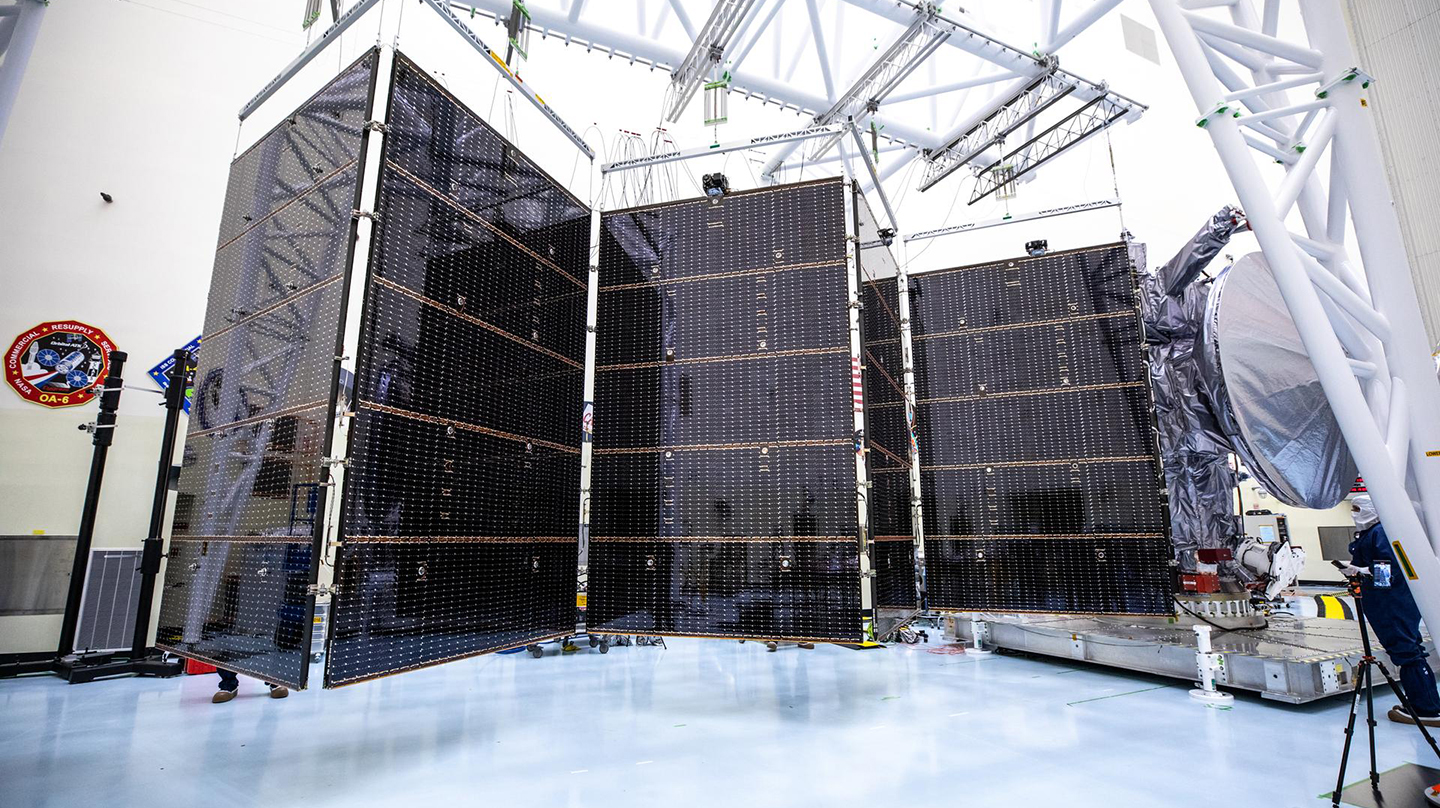News
Europa Clipper Solar Arrays Mounted and Ready for Journey to Jupiter
After crossing the Atlantic from Europe and months of inspection, cleaning and testing at NASA’s Kennedy Space Center in Florida, the solar array wings for NASA’s Europa Clipper mission are finally mounted to the rest of the spacecraft.
The two five-paneled solar array wings managed by the Johns Hopkins Applied Physics Laboratory (APL) in Laurel, Maryland, and designed and engineered by Airbus Netherlands B.V. are massive, each measuring 13.5 feet (4.1 meters) tall and 46.5 feet (14.2 m) long. Put end to end, they stretch just shy of the length of a basketball court — the largest arrays NASA has ever developed for a planetary mission.
Their integration with the spacecraft marks one of the last steps in preparation for the mission’s scheduled launch this October to Jupiter’s icy moon Europa, which scientists believe has a vast internal ocean that may have conditions suitable for supporting life. Europa Clipper, a mission led by NASA’s Jet Propulsion Laboratory in Southern California, is planned to perform as many as 50 flybys of the moon to gather data about its atmosphere, surface and interior, providing information about its ocean and possible plumes erupting at the surface.
Jupiter’s space environment is tough for the solar arrays. They need to produce around 700 watts of electricity — about what a small coffee maker needs — to power all the electronics, scientific instruments, communications equipment and propulsion system of 24 small engines. But being five times farther from the Sun than Earth, it will get just 3 to 4% of the sunlight. What’s more, Jupiter’s extreme radiation environment — the most intense in the solar system, next to the Sun — will damage and degrade solar cells. And in the planet’s shadow, where Europa Clipper will regularly fly while orbiting, temperatures plummet to minus 460 F (minus 233 C), which ordinary solar panels can’t bear.
The APL team recruited European partners who had been testing solar cells and panels for the European Space Agency’s Jupiter Icy Moons Explorer (JUICE) mission, which launched in April 2023. For the Europa Clipper solar array, Airbus Netherlands collaborated with Airbus Defence and Space Ottobrunn (ADSO) for the photovoltaic assembly and with Germany’s Azur Space for the solar cells. Those solar cells — covered with thick glass to protect against ionizing radiation and coated with indium tin oxide to achieve an electrically conductive surface — had shown the ability to produce high power in the poorly lit environment and frigid temperatures around Jupiter. Europa Clipper has more than 28,000 solar cells across its two arrays.
Unusually, the arrays are also the anchor point for the six antennas of the mission’s radar sounding instrument, REASON (Radar for Europa Assessment and Sounding: Ocean to Near-surface), which will search beneath Europa’s ice for the moon’s suspected ocean. Mounting an instrument directly to the arrays proved to be one of the most challenging parts of designing them.
“We had to go through a huge developmental process to design the panels so they could support a very heavy object hanging off the end of them,” said Taejoo “TJ” Lee, product delivery manager of the Europa Clipper solar array at APL.




